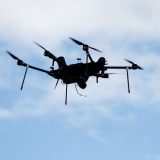noreply@blogger.com (Eric Sheninger)
Your mindset isn’t just a perspective; it’s the invisible architect of your reality. It determines not what you see, but how you interpret and act upon it, ultimately shaping your experiences, your resilience, and your growth potential. Cultivate it wisely, for it holds the key to unlocking everything you aspire to be.. Recently, on
This principle extends beyond individual capabilities to encompass our beliefs about others and our environments. Consider the Pygmalion effect, where higher expectations lead to an increase in performance (Rosenthal & Jacobson, 1968). While the original study has faced some methodological critiques, the underlying principle remains powerful: our beliefs about the potential of those around us can significantly influence their growth and development. As leaders, our beliefs about our teams, our students, and our communities set the stage for what is possible.
The impact of belief also manifests in how we interpret challenges and setbacks. A growth mindset, as popularized by Dweck (2006), posits that individuals who believe their abilities can be developed through dedication and hard work tend to persevere through difficulties, view failures as learning opportunities, and ultimately achieve greater success. This contrasts with a fixed mindset, where abilities are seen as innate and unchangeable, often leading to avoidance of challenges and a sense of helplessness in the face of obstacles. Cultivating a belief in our capacity for growth and adaptation is essential in today’s rapidly evolving educational landscape.
Our collective beliefs shape organizational culture. If a school community believes in collaboration, innovation, and continuous improvement, those values will permeate the daily interactions, decision-making processes, and overall climate. Conversely, beliefs rooted in scarcity, blame, or resistance to change can stifle progress and create a toxic environment. Leaders play a critical role in shaping these collective beliefs through their communication, actions, and the stories they amplify (Schein, 2010). By intentionally fostering beliefs that align with our vision for the future, we can cultivate more resilient, effective, and thriving organizations.
Reflecting on your own practices, I encourage you to consider the underlying beliefs that drive your decisions and interactions. What do you truly believe is possible for your students, your colleagues, and yourself? Are there any limiting beliefs holding you back from reaching your full potential or fostering the growth of those around you? Take some time this week to critically examine your internal narratives and identify one belief you can actively work to shift towards a more empowering and growth-oriented perspective. The power to shape your reality truly begins within. This can result in a reformed mindset, which becomes your masterpiece.
Bandura, A. (1977). Self-efficacy: Toward a unifying theory of behavioral change. Psychological Review, 84(2), 191–215.
Dweck, C. S. (2006). Mindset: The new psychology of success. Random House.
Ross, J. A. (1998). Antecedents and consequences of teacher efficacy. In J. Brophy (Ed.), Advances in research on teaching (Vol. 7, pp. 49-73). JAI Press.
Rosenthal, R., & Jacobson, L. (1968). Pygmalion in the classroom: Teacher expectation and pupils’ intellectual development. Holt, Rinehart and Winston.
Schein, E. H. (2010). Organizational culture and leadership (4th ed.). Jossey-Bass.
Source:: Learning – A Principal’s Reflections








